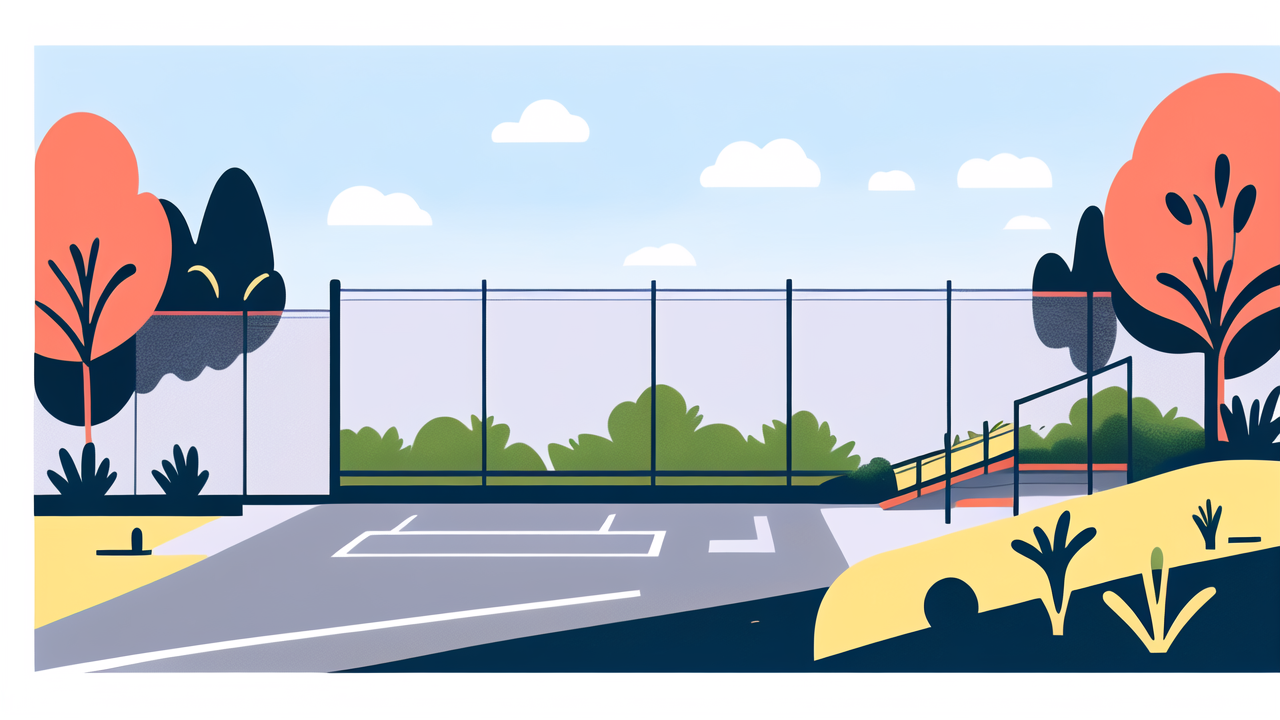Understanding Composite Fencing: A Deep Dive into Materials and Durability
The Advantages of Composite Materials in Fencing
Composite fencing is changing the game in outdoor boundaries. It's made from a mix of wood fibers and plastic. This blend creates a strong and long-lasting material. Composite fence pickets offer many benefits over traditional wood fences.

Here are some key advantages:
- Resistant to rot, decay, and insects
- No need for painting or staining
- Eco-friendly, often made from recycled materials
- Consistent color and texture
- Splinter-free, safe for families and pets
- Low maintenance requirements
These features make composite fencing a smart choice for many property owners. It combines the best of both worlds - the look of wood and the durability of plastic.
How Composite Fencing Stands Up to the Elements
Composite fencing is tough. It can handle harsh weather much better than wood. Rain and moisture don't cause it to rot or warp. This is because of the plastic in the mix. It acts like a shield against water.
In hot or cold weather, composite fences stay strong. They don't expand or shrink much. This means fewer cracks or gaps over time. The color also stays true, thanks to special ingredients that fight sun damage.
During storms, composite fences show their strength. They can stand up to strong winds and flying debris. This makes them a reliable choice for areas with extreme weather.
Overall, composite fencing offers peace of mind in any climate. It's a fence that can take on Mother Nature and win.
The Lifespan of Composite Fencing Planks
Composite fencing lasts a long time. Most composite fences can stay strong for 20 to 30 years or more. This is much longer than wood fences, which often need replacing after 10 to 15 years.
Why do composite fences last so long? Here are a few reasons:
- They don't rot or get eaten by bugs
- The color doesn't fade much over time
- They need very little care to stay in good shape
- The materials used are high quality
While composite fencing might cost more at first, it pays off over time. You won't need to replace it as often as a wood fence. This can save money in the long run.
With proper care, a composite fence can be a one-time investment for many homeowners. It's a choice that keeps looking good year after year.
The Installation Process of Composite Fencing Planks
Preparing the Ground for a Composite Fence
Getting ready to install a composite fence is key. Good prep work makes the fence stronger and look better. Here's how to start:

- Mark your fence line. Use string or spray paint to show where the fence will go.
- Check for pipes or wires underground. Call your local utility company to be safe.
- Clear the area. Remove plants, rocks, and other things in the way.
- Dig holes for the posts. They should be about one-third the post height, plus 6 inches for gravel.
- Level the ground between posts. A slight slope away from buildings helps water drain.
- Pack down the soil. This gives a solid base for your fence.
Remember to check local rules about fences. Some areas have laws about fence height or placement. Good prep work sets you up for a great fence that lasts.
Step-by-Step Installation Guide for Planks
Installing composite fence pickets is straightforward. Follow these steps for a successful fence install:
- Set the posts: Put posts in holes and fill with concrete. Make sure they're straight and level.
- Add bottom rails: Attach these to the posts. They support the fence planks.
- Cut planks to size: Measure between posts and cut planks to fit.
- Attach planks: Secure planks to rails. Use the right fasteners for composite material.
- Install top rails: These hold the planks in place and finish the fence structure.
- Add post caps: These give a nice finished look and protect the posts.
Always follow the manufacturer's instructions. Different brands may have specific steps. Take your time and double-check your work as you go. This ensures a strong, good-looking fence.
Tips and Best Practices for a Sturdy Composite Fence
Building a strong composite fence takes some know-how. Here are tips to make your fence last:
- Use the right fasteners. Choose ones that won't rust or react with the composite material.
- Leave small gaps between planks. This allows for normal expanding and shrinking.
- Make sure water can drain around posts. This prevents damage over time.
- Clean your tools often while working. This stops buildup on saw blades and drill bits.
- Follow care instructions from the manufacturer. This keeps your fence looking good.
Check your fence regularly after it's built. Look for loose planks or hardware. Fix small problems quickly to avoid bigger issues later.
With these tips, your composite fence will stay strong and beautiful for years to come.
The Impact of Composite Fencing on Homeowners and Businesses
Aesthetic Appeal: The Role of Composite Planks in Landscaping
Composite fencing adds beauty to any property. It comes in many colors and styles. This makes it easy to match your home or business look. The clean lines of composite planks create a modern, neat appearance.

Here's how composite fencing enhances landscapes:
- It provides a sleek backdrop for plants and flowers
- Around pools, it offers safety and style
- It can define outdoor living spaces like patios
Unlike wood, composite fencing keeps its good looks over time. It doesn't turn gray or get weather-beaten. This means your property always looks well-cared-for.
Many homeowners and businesses choose composite fencing for its lasting beauty. It's a simple way to boost curb appeal and create a polished outdoor space.
Cost-Benefit Analysis: Investing in Composite Fencing
Composite fencing costs more upfront than wood. But it can save money over time. Let's look at the long-term benefits:
- Durability: Lasts 20-30 years, compared to 10-15 for wood
- Low maintenance: No painting or staining needed
- Consistent look: Keeps its color and shape for years
- Added value: Can increase property worth
The initial cost is higher, but you spend less on upkeep. You also don't need to replace it as often as wood. This means composite fencing can be cheaper in the long run.
For businesses, composite fencing is a smart investment. It keeps properties looking professional with little effort. This can attract customers and save on maintenance costs.
Enhancing Property Value with Composite Fencing Planks
Composite fencing can boost your property's value. It's a feature that appeals to potential buyers. Here's why:
- It's long-lasting, which means less work for new owners
- The modern look adds to the home's overall appeal
- It shows the property is well-maintained
Real estate agents often highlight composite fencing as a selling point. It can make a property stand out in listings. This might lead to quicker sales or better offers.
For businesses, composite fencing creates a good first impression. It shows attention to detail and quality. This can enhance the company's image and attract more customers.
In conclusion, composite fence planks are a smart choice for modern properties. They offer beauty, strength, and value. As more people discover these benefits, composite fencing continues to grow in popularity.
